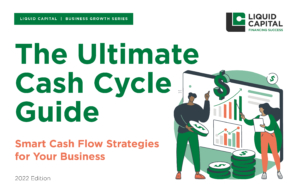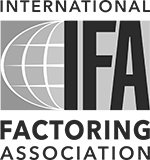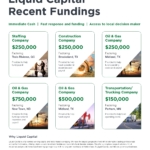Invoice factoring for small business: what you need to know to grow
Invoice factoring for small business explained: How owners and financial decision-makers can increase their cash flows with more reliability.

Whether a company needs to raise working capital, accelerate business growth, hire new talent or buy new equipment, invoice factoring is a popular choice of funding. Organizations of all sizes seeking an alternative to bank loans can quite literally cash in with this strategy. When banks can’t unlock funding due to limited or poor credit history and other criteria that can’t be met, invoice factoring for small business can be particularly advantageous.
If you work with the right invoice factoring company, your business can operate with less stress when dealing with slow-paying customers — and have access to the money you’ve already earned (aka, invoiced).
However, you may be wondering, “How do I quickly assess different factoring companies and find the right one who will benefit my business the most?”
Questions you need to ask when selecting an invoice factoring company
When you begin your search for a factoring partner for yourself or your client, be sure to ask these quick questions:
- How long has the invoice factoring company been in business?
- What is their industry expertise?
- Do they offer funding options other than invoice factoring?
- Can you see some customer testimonials and case studies?
- How much will it cost me to factor with them?
- How quickly does it take to get approved for invoice factoring?
Your answers should match your business needs and help you decide if the factoring company can get you the funds you need.
For a more in-depth guide, take a look at our free invoice factoring guidebook that features ten questions that will help you pick the right factoring partner for your company.
Accelerate your cash flow in four simple steps
If you know invoice factoring is the right choice to accelerate your cash flow, here are four simple steps in the process to help you access capital:
Step 1: Do your invoice payment terms qualify for factoring?
If you have invoices that are due in the short term (for example, in 30, 60 or 90 days), these could be the right invoices for factoring.
Selling them to a factoring company can provide you with immediate cash flow, as invoices with much longer terms may not always be eligible.
Related: Is your cash flow suffering from 90 day payment terms? Invoice factoring can help
Step 2: Sign a factoring company agreement
Once you’ve selected a factoring company (also called the “factor”), you’ll sign an agreement that marks the beginning of a formal business relationship.
The agreement will outline what account receivables (ARs) or invoices the factor is purchasing, along with other terms and conditions that will help fast-track future financing.
If you’re referring a client to Liquid Capital, establishing a long-term partnership with your Liquid Capital Principal can open new doors for your business.
Step 3: Calculate how much working capital you need for your goals
Based on your immediate and long-term plans, you probably have an idea of how much capital you need flowing into the business.
When you meet with your factoring partner, come ready with that number. With invoice factoring, you can calculate how much working capital you’ll have access to once you factor your invoices. And your lending partner can also help you with these calculations.
Once you know exactly how much cash is being injected into your cash cycle, you can plan to move forward with business operations. For example, you can begin the process of buying inventory or hiring new employees for a busy season — knowing that you can now afford to make these strategic decisions.
Step 4: Plan the timelines to collect your reserve
Once the client has paid your factoring partner the outstanding invoice, the factoring company will be able to release the balance of the “reserve fund.” This final amount gives you additional working capital, which can be a welcome cash inflow.
Work with your factoring partner to understand the timelines for collecting the final reserved funds, and you’ll have a better understanding of your inflows. You may plan for these reserves as ‘top-ups’ to buy additional goods or services, or to act as a buffer in the event of unexpected cash outflows.
Related: See the definition of “reserve” here, plus other important factoring terms.
The right solution at the right time
Invoice factoring has gained popularity in recent years because it offers a quick finance solution to all types of businesses, from all types of industries. (But by no means is it a new solution. Read here for some history.)
There are plenty of advantages to using invoice factoring, aside from the obvious need for working capital. But one of the most important benefits is that you’re not adding any more debt to your business. (If you’re ready to learn more, get a head-start and learn all the factoring terminology in our free Ultimate Factoring Encyclopedia.)
By working with a reputable factoring company, you’ll gain a business partner that provides financing when you need it — and also offers both financial analysis and genuine support that helps you scale your business.
At Liquid Capital, we understand what it takes for small, medium, and emerging mid-market businesses to succeed – because we’re business people ourselves. Our company is built on a network of locally owned and operated Principal Offices, so whenever you’re talking to Liquid Capital, you’re talking directly to your funding source and a fellow business person.














